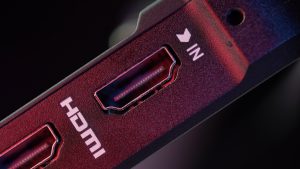In recent years, solid-state drives (SSDs) have become increasingly popular as a means to significantly enhance the performance, reliability, and overall user experience of computer systems. By incorporating an SSD, users can take advantage of faster loading times, reduced noise levels, and improved energy efficiency. Whether used in a desktop computer, laptop, or gaming console, SSDs have emerged as an essential component for those seeking peak system performance and durability.
This comprehensive guide aims to demystify SSD technology for TechnoQia’s readers and provide valuable insights into selecting, installing, and understanding the advantages of SSDs for your computer system. By exploring the differences between SSD types, form factors, and capacities, our in-depth content will empower you to make well-informed decisions when it comes to choosing and installing the perfect SSD tailored to your specific needs and preferences.
In addition to providing educational and useful information, this guide will also feature Amazon Affiliate deals on top-rated SSDs, ensuring that readers are presented with a broad array of options at competitive pricing. Our expert recommendations and detailed product overviews will not only streamline the selection process but also deliver all the information needed to make the most suitable SSD choice for your system.
Embark on this journey into the world of SSDs and unlock the full potential of your computer with better performance, structural resilience, and energy efficiency. With TechnoQia’s expert guidance, detailed information, and carefully curated product recommendations, you will be well-equipped to upgrade your computer system with a high-quality solid-state drive, contributing to a faster, quieter, and more efficient computing experience.
The Power of SSDs and Their Advantages Over Traditional Hard Drives: Elevate Your System Performance
Solid-state drives (SSDs) have revolutionized the world of data storage, providing numerous benefits when compared to traditional hard disk drives (HDDs). Upgrading to an SSD not only increases the overall performance of your computer system but also enhances its durability, energy efficiency, and noise reduction. Here are the key advantages of SSDs over HDDs:
– Improved Performance: SSDs boast significantly faster read and write speeds than HDDs, resulting in quicker boot times, faster loading times for applications, and enhanced data transfer rates.
– Enhanced Durability: As SSDs have no moving parts, they are less prone to damage from physical shocks and are more resistant to wear and tear compared to HDDs, which contain spinning disks and moving read/write heads.
– Increased Energy Efficiency: SSDs consume less power than HDDs, providing longer battery life for laptops and reduced overall energy consumption for desktop computers.
– Reduced Noise Levels: Without any mechanical components, SSDs operate virtually silently, ensuring a quieter computing environment.
Considering these benefits, investing in an SSD can significantly improve your overall computing experience by delivering faster performance, longer-lasting hardware, and improved energy efficiency.
SSD Types: Explaining the Difference Between SATA and NVMe: Choose Wisely for Optimal Performance
When selecting an SSD, it’s crucial to understand the two prominent SSD types available in the market: SATA and NVMe. Each type has its performance, compatibility, and ideal use cases. Let’s delve into the differences between SATA and NVMe SSDs:
– SATA SSDs: SATA (Serial ATA) SSDs are the most common type and are compatible with almost all computers, offering a straightforward upgrade option for systems with existing SATA HDDs. While SATA SSDs provide faster performance than HDDs, their speed is limited by the SATA interface, with maximum sequential read/write speeds usually capped at around 600 MB/s.
– NVMe SSDs: NVMe (Non-Volatile Memory Express) SSDs are designed for more recent computer systems featuring an M.2 slot with PCIe (Peripheral Component Interconnect Express) support. NVMe SSDs offer significantly faster performance than SATA SSDs, with sequential read/ write speeds easily reaching 3500 MB/s or more. However, because NVMe SSDs rely on PCIe lanes, your system’s compatibility and available PCIe lanes can determine the maximum achievable speed.
When choosing between SATA and NVMe SSDs, consider your computer’s compatibility, budget, and desired performance. While NVMe SSDs offer superior speeds, SATA SSDs remain an excellent choice for those seeking a more affordable and universally compatible upgrade.
Form Factors and Capacities: Find the Perfect Fit and Storage Size for Your Needs
As you assess your options, it’s essential to familiarize yourself with the various SSD form factors and storage capacities available, as these will impact your selection and compatibility. Here’s what you need to know:
– Form Factors: SSDs come in three primary form factors: 2.5-inch, mSATA, and M.2. The 2.5-inch SSDs are similar in size to standard laptop HDDs and are compatible with most systems. mSATA SSDs are specifically designed for small laptops or ultrabooks, using a unique connector. Lastly, M.2 SSDs come in varying lengths and can support both SATA and NVMe interfaces. Before purchasing, verify your system’s compatibility with the desired form factor.
– Capacities: SSDs are available in various storage capacities, typically ranging from 120 GB to 4 TB or even higher. When selecting an SSD capacity, consider your storage needs, budget, and the potential trade-offs between price and performance. Larger-capacity SSDs often provide better performance and endurance due to increased NAND flash chips.
How to Choose and Install the Ideal SSD for Your System: A Seamless Upgrade Experience
To ensure the successful selection and installation of an ideal SSD, follow these steps:
1. Assess Your System Compatibility: Determine your computer’s supported SSD types and form factors by checking your user manual or consulting your manufacturer’s website.
2. Select the Perfect SSD: Choose an SSD based on your desired performance, budget, form factor, and capacity requirements. Consult our recommendations in this article or explore Amazon Affiliate deals for an extensive selection.
3. Remove Any Existing Drives: Safely remove your existing HDD or SSD by shutting down your computer, disconnecting the system from power, opening the case, and detaching the drive’s power and data cables.
4. Install the New SSD: Attach the new SSD to the appropriate connection—whether an M.2, mSATA, or standard SATA slot—and secure it in place using the provided mounting hardware or screws.
5. Initialize and Format the SSD: Power on your computer, access the BIOS or UEFI settings to ensure your new SSD is detected, and then boot into Windows or your preferred operating system to initialize and format the drive.
Supercharge Your Computer System with the Right SSD
By understanding SSD technology, key features, and installation procedures, you can confidently select and invest in the ideal solid-state drive for your computer system. With TechnoQia’s carefully curated and comprehensive tech guides, you are equipped with the knowledge and resources required to upgrade your system, enhance its performance, and enjoy a faster, more efficient computing experience. Get the best solid state drives and experience the full potential of your computer with help from TechnoQia.





